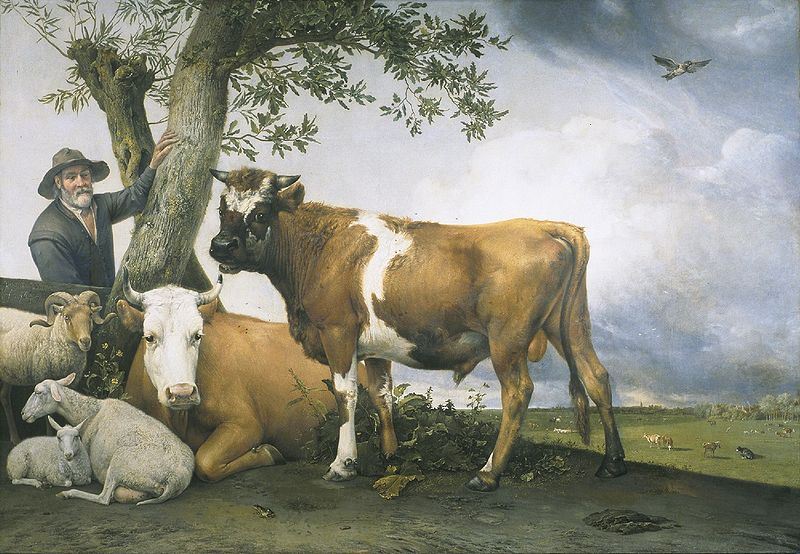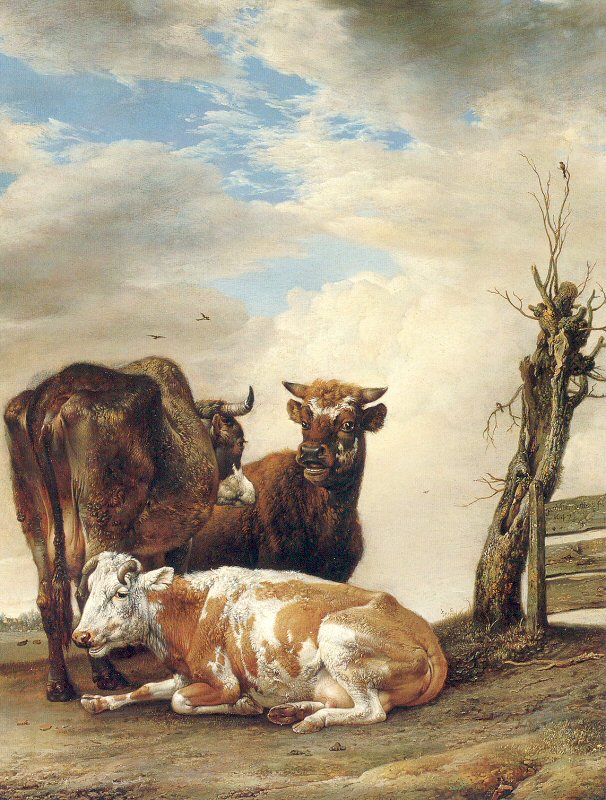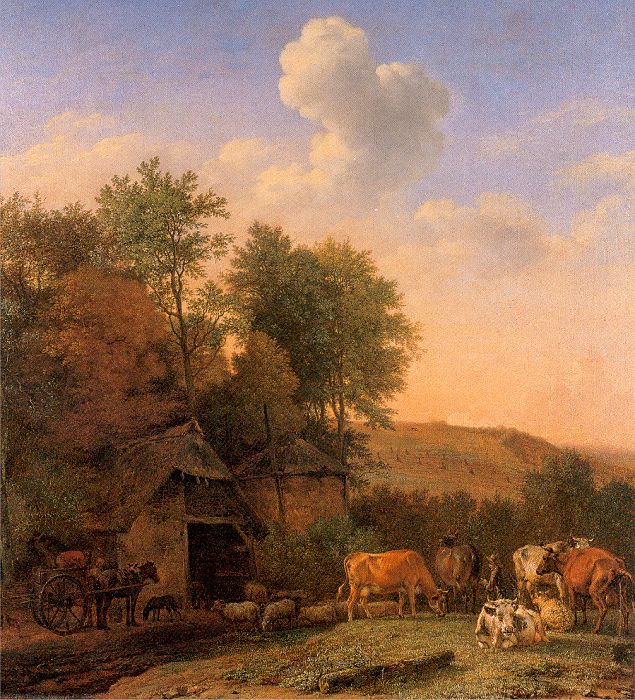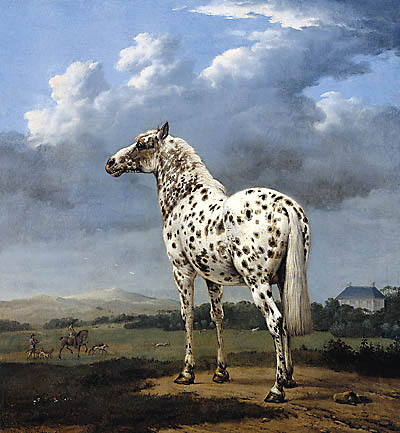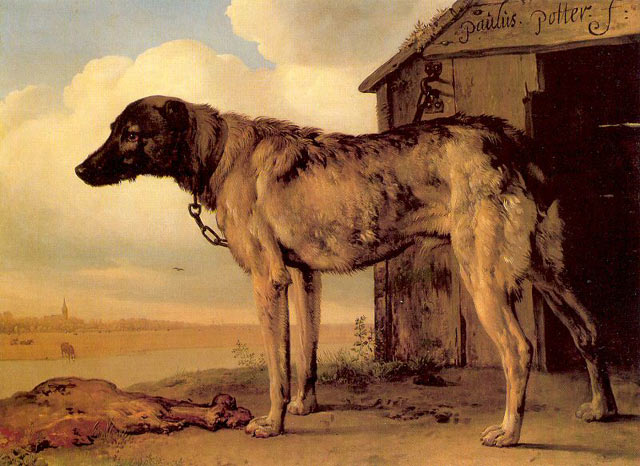<Back to Index>
- Astronomer Edwin Powell Hubble, 1889
- Painter Paulus Potter, 1625
- 7th Prime Minister of Canada Sir Wilfrid Laurier, 1841
PAGE SPONSOR
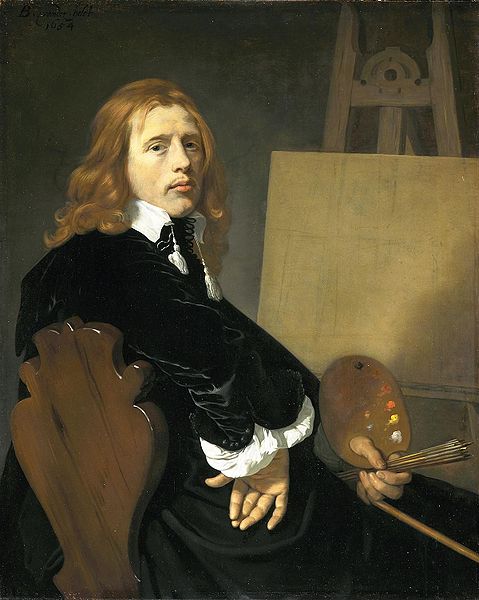
Paulus Potter (baptised on November 20, 1625 in Enkhuizen – buried on January 17, 1654 in Amsterdam) was a Dutch painter, specialized in animals in landscapes, usually with a low point of view. Before Potter died of tuberculosis, 28-years old, he succeeded in producing about a hundred paintings, working continuously.
Few details are known of Potter's life. In 1628 his family moved to Leiden, and in 1631 to Amsterdam, where young Paulus studied painting with his father, Pieter Symonsz Potter. After his mother died, his father started an affair with the wife of Pieter Codde, also living in the fancy Sint Antoniesbreestraat. For some time his father was a manufacturer of gilded leather hangings outside the city walls.
Potter became a member of the Guild of Saint Luke in Delft, but by 1649, Paulus moved to The Hague, next to Jan van Goyen. Potter married in the Hague and his father-in-law, who was the leading building contractor in the Hague, introduced him to the Dutch elite. Amalia of Solms-Braunfels, a member of the stadholder's family and an art-lover, bought a painting with a pissing cow, but some court ladies seemed to have advised against it. By May 1652, after a case about delivering a new painting, he returned to Amsterdam. Potter was invited by Nicolaes Tulp, who was impressed by his civilized behavior and politeness. Potter painted his son Dirck Tulp, but only changed the face on an earlier work he was not able to sell. Paulus painted a self portrait which was at Hackwood Park, Hampshire until 1998, it is now at Elibank House, Buckinghamshire.
His most famous painting is The Bull (circa 1647), that is now in Mauritshuis in The Hague,
composed after drawings Potter made in nature. Even this painting was
criticized, it was greatly admired during the 19th century as an early
example of Romanticism.
